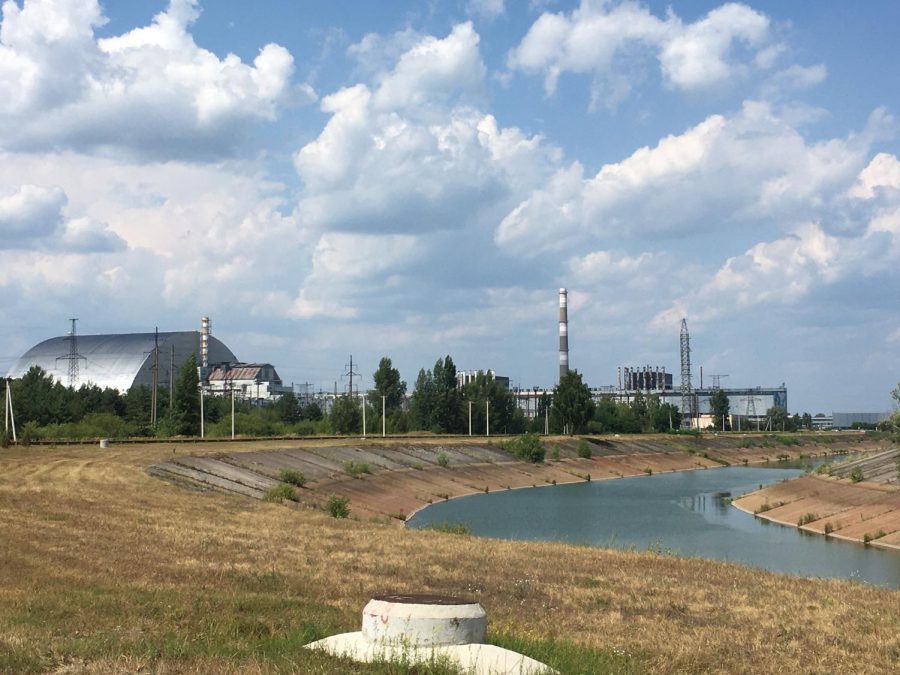Dowling visits Chernobyl 35 years later
The area around the Chernobyl nuclear power plant is still uninhabitable for humans, but many ecosystems have bounced back and begun to thrive. (Courtesy of Brendan Dowling)
September 28, 2021
You’re walking through a town, but it’s empty, abandoned, and falling apart. Left the same way it was 35 years ago.
The tragedy of Chernobyl, a nuclear disaster in which a reactor that contained high levels of radiation exploded unexpectedly in Ukraine, leaving many scars. Math teacher Brendan Dowling had the opportunity to see the impact of Chernobyl in person with his son before school began.
“When you enter, it’s almost like a military compound that you’re entering, so there’s like guard gates,” Dowling said.
Chernobyl caused many to leave their homes behind in an unexpected hurry. An experience no one would have thought they would go through.
“People were given one chance several months later to get any of their belongings out of their houses,” Dowling said. “[They] are there the same way they were back in [1986].”
Large cities in Ukraine such as Pripyat and Chernobyl as well as 94 smaller towns were evacuated after the disaster. The evacuations left buildings empty and slowly falling apart after years of no one taking care of them nor living close enough to.
“It was pretty [unsettling] to see these abandoned towns that were falling apart structurally,” Dowling said. “I thought it was so remote that there weren’t any towns nearby, I didn’t expect to see the decaying towns. I’m shocked our tour allowed us to get so close to a lot [of them].”
Even after a few decades, the surrounding areas of Chernobyl cannot go back to what it once was anytime soon. It may take thousands of years before it is completely habitable.
“They gave us these Geiger counters that you could go around with to detect the level of radiation. With most metal objects within 20 miles of [the explosion], [the radiation level] would still go off the charts,” Dowling said.
The Ukrainian government opened the sighting to tourism in 2011, only 10 years ago. Thousands of people now visit the radiation site every year after having to go through many protocols. Domestic animals had to be shot on sight due to radiation exposure.
Safety measures were placed for tourist groups and visitors to make sure they were not dangerously exposed.
“There are checkpoints as you get closer and closer to the reactors, you have to go through these scanners [that] check your radiation and if it’s too high, you actually have to change clothes,” Dowling said. “We had to keep showing our passports the whole time.”
Whether or not the safety protocols for tourists are sufficient is impossible to determine. As technology is still developing, there are continuous risks in visiting the contaminated area.
When the disaster first happened, many scientists were unsure of what would happen or how much it would impact surrounding countries. Even with the explosion happening in Ukraine, many towns in Belarus were also dangerously contaminated.
“I remember that the radiation cloud was super unpredictable because of the wind patterns,” Dowling said.
After having to evacuate over 300,000 people, some return near the contamination zone to continue living despite the dangers. Today, around 7,000 people work around the plantation but take radiation tests regularly.
According to Dowling, the thing he remembers the most was the red forest surrounding the power plant.
“This forest has some of the most pristine animals, [and it] has regenerated much of itself. It’s crazy that you see what looks like a beautiful oasis in the middle of [a] tragic event of history. It’s amazing how beauty resurfaces,” Dowling said.



